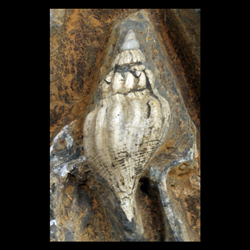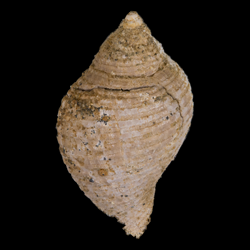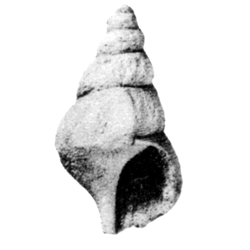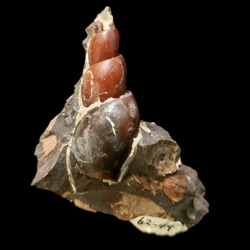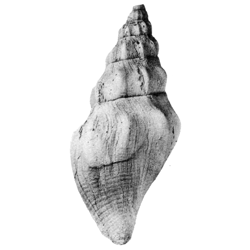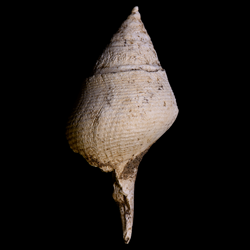
Fasciolariidae
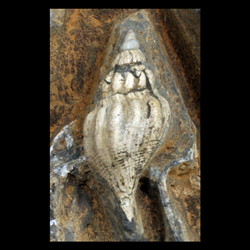
- Phylum: Mollusca
- Class: Gastropoda
- Order: Neogastropoda
- Family: Fasciolariidae
Overview
Fasciolariidae Gray, 1853
Common Name: Tulip shells and spindle shells
Extant/Extinct
Key morphological features: The Fasciolariidae are medium to large gastropods with shells that have medium or high spires. Exterior sculpture consists of spiral cords with rounded, axial knobs, especially prominent towards the whorl shoulder in most species.
SIZE:
Paleoecology: The Fasciolariidae are predatory marine gastropods with certain species attaining very large size. Triplofusus giganteus, the Florida Horse Conch, is the largest living gastropod in the Atlantic Ocean, capable of reaching sizes exceeding half a meter (up to about two feet) in length. Large species feed mostly on other gastropods and bivalves, while smaller species feed more frequently on polychaete worms. Species of Fasciolariidae inhabit sandy or muddy habitats, and in some cases seagrass beds, at tropical to temperate latitudes worldwide, and depths ranging from intertidal to hundreds of meters.
MOBILITY: Mobile
FEEDING MODE: Predator
HABITAT: Epifaunal
Sources:
Davies, A.M. 1971. Tertiary Faunas Vol. 1, second edition. New York: American Elsevier Publishing Company, Inc. 571 pp.
Tunnell Jr., J.W., Andrews, J., Barrera, N.C., Moretzsohn, F. 2010. Encyclopedia of Texas Seashells. College Station: Texas A&M University Press. 512 pp.
Tunnell et al. (2010); Harasewych, M.G., Moretzsohn, F. 2010. The book of shells. Chicago: The University of Chicago Press. 656 pp.
